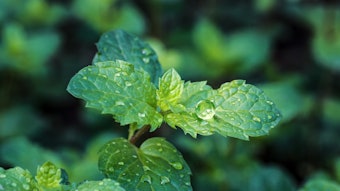
My earliest memories of mint were of the plants overwhelming my mother’s herb garden. She’d intentionally plant thyme, rosemary and dill to flavor our meals, but eventually, mint always won out, at first curiously nestling into other pots, until the robust herb stretched its limbs wide enough to evict its herbal neighbors. We’d have bushels of mint sprouting with pride in each pot. I’d pluck a few leaves on my way to school, long before I could really understand its implications in the mints and toothpaste I’d covet for fresh breath. Later, when I learned how to cook, mint would brighten up many of my own dishes, including a lentil soup passed down from my mother’s mother. And now, I can humbly describe from my own synesthetic point of view, mint is vibrant, sharp and uplifting. Or perhaps, I learned this from many of you perfumers and flavorists out there?
Today, these sensory descriptions of mint are commonplace within the flavor and fragrance industry. But since we’re in a niche industry, each variety has its own description for more specific applications. Sweet spearmint; pungent peppermint; cooling cornmint. According to a U.S. Grand View Research reporta, cornmint essential oil sales are expected to reach $390 million by 2022, followed by peppermint essential oil ($170 million) and spearmint ($110 million).
Mint and cooling agents are a pair to be reckoned with in oral care, which is one of the themes of this issue. The power of menthol is used to mask off notes of functional ingredients in oral care products (page 40) and even develop a sense of confidence (page 26); as well as aid in digestion and even create indulgent flavor profiles when paired with other ingredients like chocolate, citrus or tea (page 8).
Mint is a proud plant, and why wouldn’t it be? Its aromatic and cooling properties inspire confidence and refreshment each time we work with it. I hope you find some “cool” insight within these pages.
With warmth from Brooklyn,
Deniz Ataman
Managing Editor
Footnotes:
a Value of Essential Oil Market in U.S. from 2012-2022 by Type
Editor’s Note: We’d like to address an error printed in the May 2019 article, “Authentication of a Flavoring Substance: The Vanillin Case.” In F-1, Natural Vanillins should be in green and the US Natural Vanillins should be in grey. You can find the correct graph in the May digital edition. We regret the error.”











